In the heart of Muncie’s Blaine neighborhood on the southeast side of the city, 13 acres of overgrown land, garbage, and cracked slabs of leftover foundation lie behind a 12-foot barbed wire fence.
To the right of a padlocked entrance, a sign, defaced by graffiti, reads, “Future site of the Urban Training Farm. Please respect our boundaries while we clean up. Thank you!”
This sign has been hanging on the site for almost 10 years.
The site is home to a nearly 130-year-old history known locally as
“Frank’s Foundry.”
While some members of the community experienced the challenges of the foundry first-hand, others who only know the now desolate site are hopeful that the once-booming foundry can again contribute to the east side in a new way.
A storied history
In 1898, Muncie Foundry and Machine opened on this site, owning only a fraction of the land now occupied today.
Frank’s Foundry, which made iron castings for trucks, tractors, forklifts, and off-road construction equipment, purchased the original building in 1942. By 1948, the foundry had expanded to its current property.
Between 1959 and 1985, the foundry went by the name “Frank’s Foundries Corp.” Throughout the ‘60s and ‘70s, neighborhood residents began to complain that their homes and cars were being ruined by the foundry’s emissions. Because of this, Frank Foundry installed a scrubber system to reduce the site’s emissions around 1973.
A few years later, in 1977, the foundry experienced its first set of fires in the plant due to a small explosion, resulting in no injuries.
In 1982, Frank’s completed work on arguably its most well-known project, a 400-pound casting for the Eiffel Tower. But just three years later, the foundry closed, leaving all 105 of the workers at the time jobless.
In 1989, Muncie Iron Works began operating at the site via loan but defaulted in 1991 and closed again, prompting the Blaine neighborhood to petition the city of Muncie to demolish the site.
After a few changes in ownership years later, the foundry was deemed “unmarketable” by a local appraiser. Sometime between then and 1998, ownership was transferred again, this time to a felon who used the site to store waste, later being convicted for his crimes.
In 1999, the Environmental Protection Agency (EPA) deemed the site as an “imminent and substantial endangerment to public health, welfare, and the environment” and began to clean up the area.
In the end, the EPA removed more than 100 55-gallon drums of hazardous waste containing polychlorinated biphenyls (PCBs). PCBs are man-made chemicals that were banned in 1979 for being toxic and non-biodegradable, according to the EPA.
In 2007, after the site had been left abandoned for a handful of years, the foundry experienced its second fire, which appeared to have been sparked by the use of a cutting torch, forcing firefighters to respond.
Two years later, a third and final fire broke out, prompting the city to issue a demolition order for the 10 acres of buildings on the site after they stood abandoned for decades.
Ninety-five-year-old James Walsmith worked at Frank’s Foundry as a plant manager for most of his life.
Walsmith started out at the foundry as a trainee, where he says he “unknowingly learned” the basics of casting manufacturing, climbing the foundry’s ladder to quality control superintendent, then plant manager.
“We had roughly 110 people in three or four departments. The core room, foundry, molding, melt, and grinding cleaning,” he says.
Walsmith lived roughly 18 miles away in Dunkirk, Indiana, traveling to and from the foundry every weekday, and on the occasional Saturday. While he says it’s hard for him to construct the details of most things during his time at the foundry, he remembers being consumed with union relations and strikes in the plant quite often.
In the ‘70s, Walsmith remembers when Frank’s installed its scrubber system to reduce emissions.
“The neighborhood didn’t appreciate [us]. We were in a neighborhood where there were houses and residents within a block or two, and there was a middle school across the street, and people complained about the residues and emissions that came from the foundry,” he says.
Walsmith said community relations at the time were rough. While community members “didn’t appear at the front door with complaints,” he said he would know when complaints were being spread among neighbors.
When it comes to efforts to make the site something for the community, he remembers discussions of Frank’s economic impact being questioned, and is unsure of how practical a plan to reform the site can be.
“I wish I had a cheerier story for you, but people were probably glad to see it close,” Walsmith says.
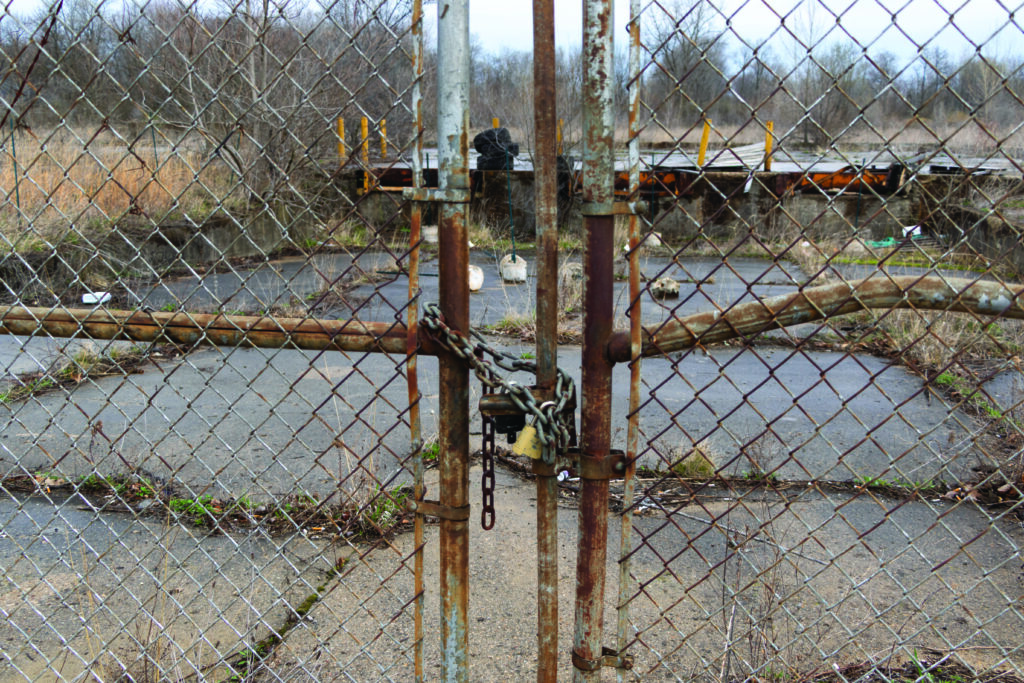
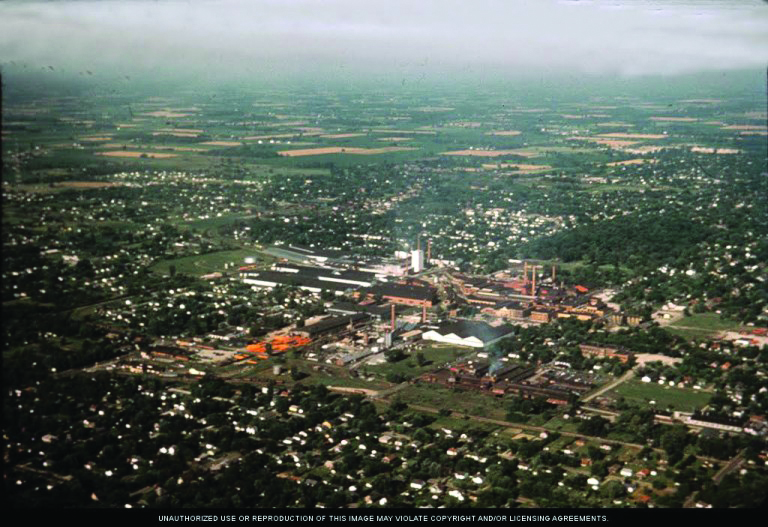
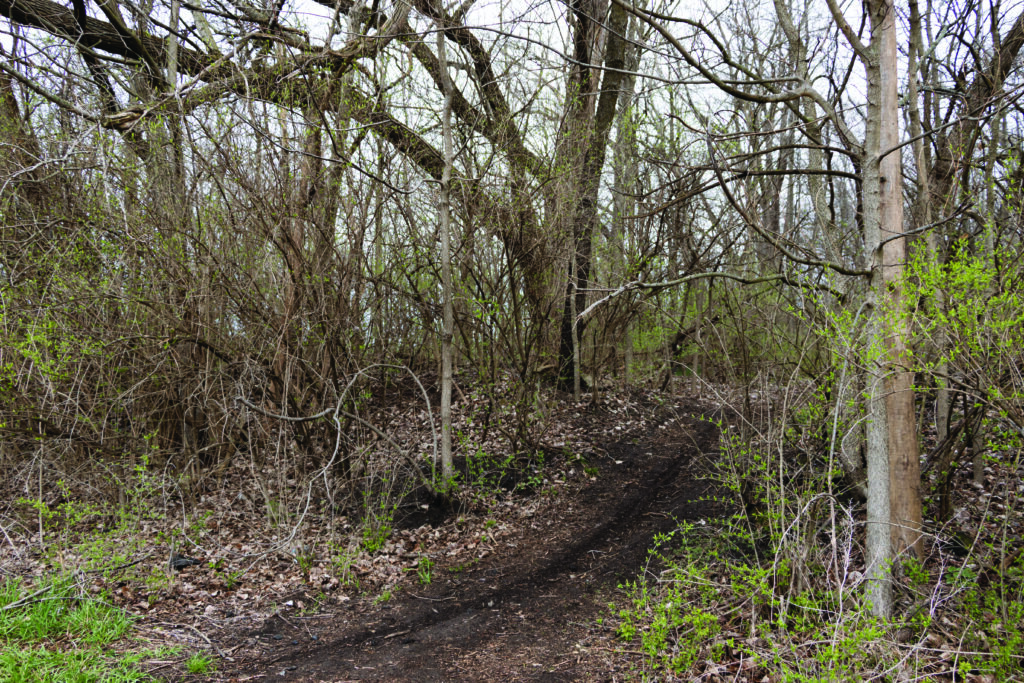
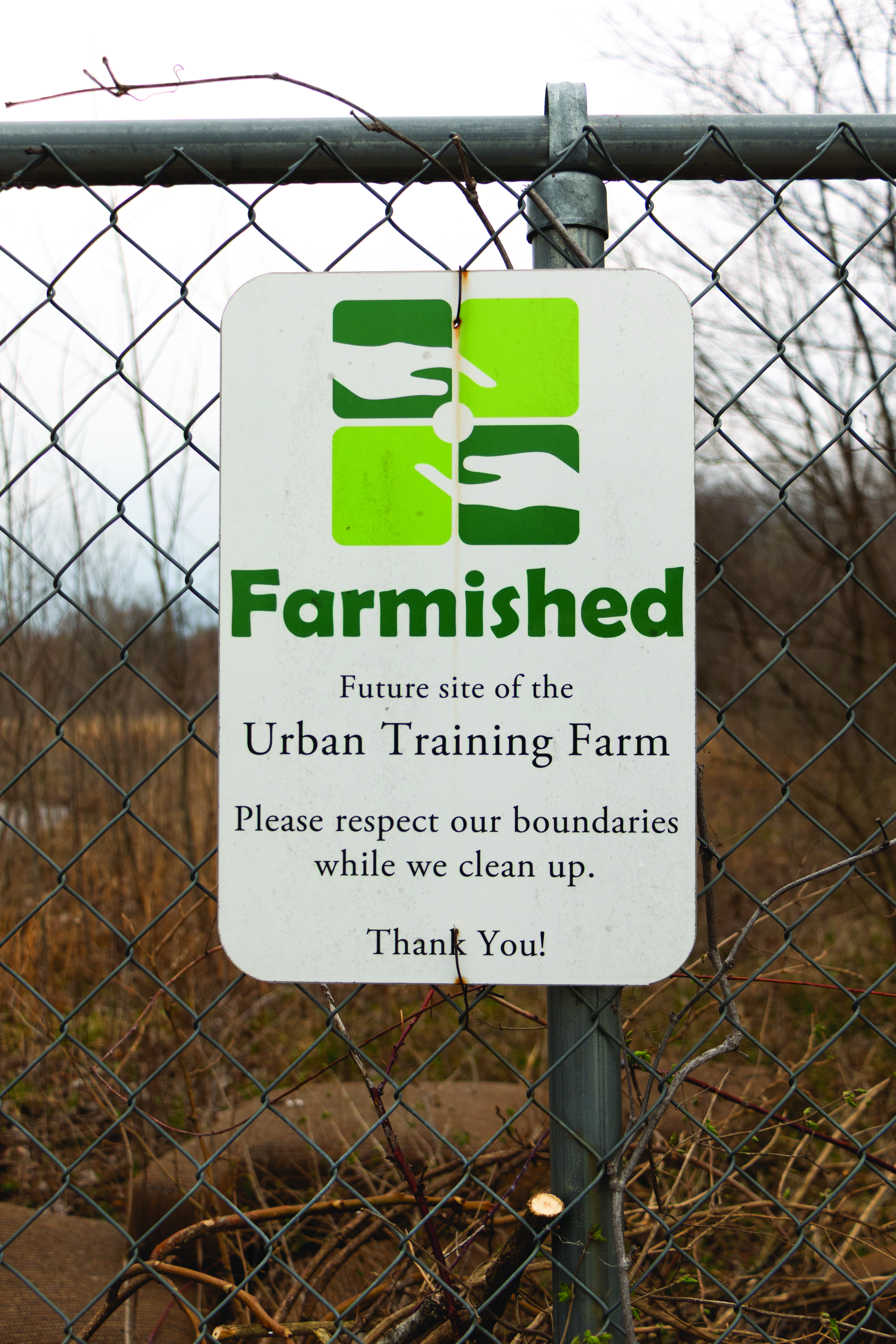
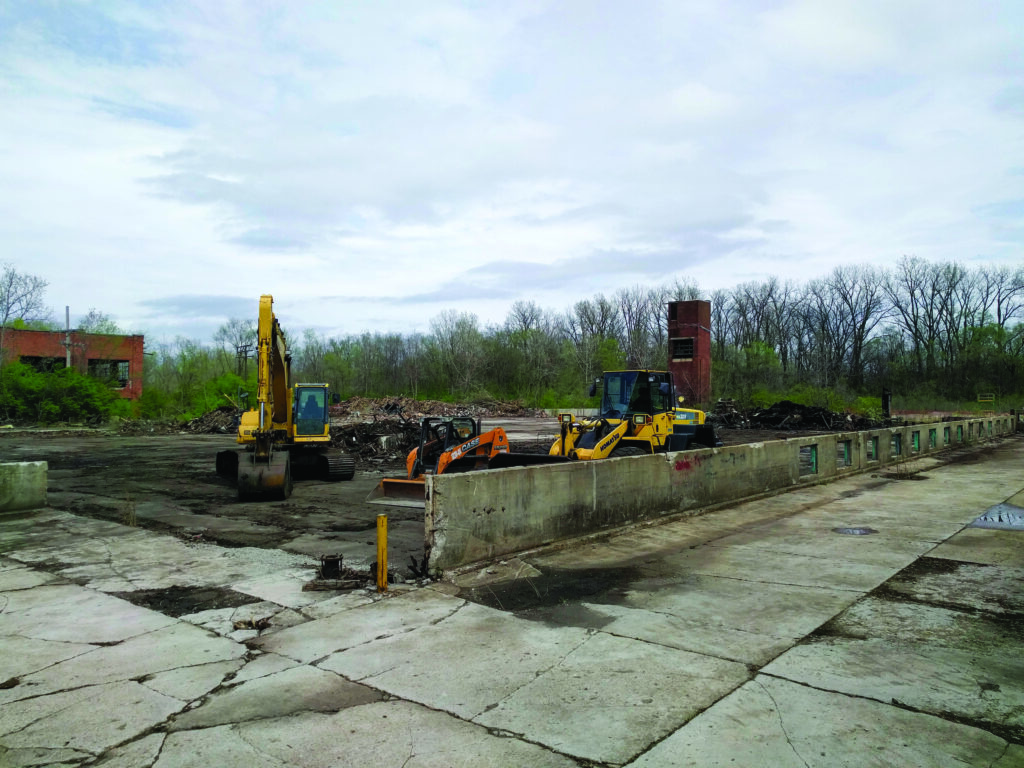
New beginnings
After again passing through the hands of various owners, in 2014, the foundry’s then-owner donated two-thirds of the site to the nonprofit organization ‘Farmished,’ which acquired the last third of the land from the city of Muncie two years later.
Natalie Yates is an assistant professor of landscape architecture and planning at Ball State University.
With her research focusing on post-industrial landscapes, urban food systems, and technology in landscape design, Yates was drawn to Farmished and Frank’s Foundry a couple of years ago.
After being introduced to the board of directors`, she quickly began introducing her design students to the site, holding studio sessions and encouraging them to create proposals for what the site could become.
“My interest has always been about these abandoned spaces that have potentially problematic soil conditions and how we can think about remediating,” she says. “People have ideas about what [Frank’s Foundry] should be and what it shouldn’t be … I want to see what we could do.”
Gathering these proposals, Yates and her students held a presentation at Madjax Maker Force and spoke to community members and Ball State University President Geoffrey Mearns. She says “they were all very interested” in the potential of the site.
Because of this success, Yates was offered a position on the board, acting as a liaison between Ball State and Farmished. However, around 2017, while work on the site was running smoothly, the nonprofit started to falter internally.
In April of that year, the foundry was officially declared an “EPA Superfund Cleanup” site and the remaining buildings were condemned. Within a month, the structures and contaminated materials were removed.
Various other debris and objects were removed, including drums of wood stripping solution, asbestos-
containing roofing material in the soil, and buried waste containers.
A well on the property revealed that the site’s water had maximum lead contaminant levels, requiring capping, a process that doesn’t remove the water but isolates it to avoid the spread of contamination.
The cleanup effort resulted in 5,648 tons of material debris removed. In addition, 110 gallons of wood stripper solution, 10 gallons of waste capacitor oil, and 31 capacitor carcasses were removed. 500 gallons of liquid were pumped from an underground storage tank as well.
Two years later, in the fall of 2019, Farmished was issued a letter from the Indiana Department of Environmental Management (IDEM) confirming the cleanup was successful and that, with restrictions, the site met “applicable residential
cleanup criteria.”
Meanwhile, Yates said the board of directors slowly began to disassemble.
“There [weren’t] a lot of meetings. The current president was out of town a lot, so it just kind of began to slow down … it was kind of unsure where [Farmished] was going,” she says.
Soon after receiving the letter from IDEM, the president of the board stepped down.
Yates didn’t want to see Farmished or the foundry project end and agreed to take on the role of President at the nonprofit. She then formed a new board a few months before the pandemic, which has gained and lost members fairly consistently.
Yates says, “everything just kind of fell off,” and that she and her board haven’t been able to get anything going again.
On the Farmished website, this is where the nonprofit ends its updates.
Between cracked foundations, vegetation has grown rampant over time on the site. Cottonwood trees litter in and around the property, some atop 30 to 34-foot hills of cast-off foundry sand. Remnants of site walls are left over here and there.
To Yates, this means that currently, the site is in its “eyesore phase.”
Farmished got its name from a play on words, farm and famished, aiming to address Muncie’s food insecurity in hopes that Frank’s could become a community garden. Overall, the organization wants to provide some of the missing links in the local food network.
Farmished has begun to operate with some other local organizations, taking advantage of the holes on the site left from the EPA cleanup.
Yates said one of the holes is filled in and will be used theoretically for composting of organic matter.
However, Yates says due to regulations and city ordinances, it’s not a feasible strategy, which isn’t the organization’s only problem with its vision.
“Moving forward, there are some more stipulations, of course. If you want to plant in the ground, you have to bring in clean soil, 18 inches, or it has to be in raised beds on top of the [leftover] foundations, which are serving as a cap. If you want to remove any of the soil from the site, then that has to be disposed of properly,” Yates says.
Fifth-year landscape architecture student at Ball State, James Durango, is basing her master’s comprehensive project on the foundry site’s potential. Durango knew before landing on the foundry that she wanted to tackle Muncie’s food insecurity with her project.
“I’m aware that, in my life, I’ve been very privileged to have access to fresh food and vegetables. When I was a kid, my mom had vegetable beds, and we would eat fresh tomatoes and fresh cucumbers, and that was really nice,” she said. “Not everyone has that, so it’s something I’ve been passionate about for a long time.”
According to Second Harvest Food Bank, 16.7% of Delaware County residents face food insecurity. This means that every day, 18,760 people don’t know where their next meal will come from.
With this in mind, and the fact that Muncie is a food desert, meaning parts of the city either lack the income or the accessibility needed to eat healthy foods, Durango took on the project with three goals: cultivating, cooking, and community.
“[The plan is] to educate people on how to grow their own food, educate people on how to take that food and cook with it or preserve it, and then also making the space into a community space,” she says.
She quickly discovered that reforming industrial sites into something like a community garden has not been done before. Similar projects mainly consisted of taking industrial sites and turning them into parks.
Regardless of whether or not Durango had somewhat of a blueprint, she was ready to tackle the project and its issues of cracked foundation, unplantable soil, and present habitats on the site.
“Do I really want to tear [trees] down just to grow food there when it’s already being productive [for the environment]?” Durango says.
Additionally, the site runs right along the Cardinal Greenway, which Durango details connecting to in her project. Realistically, she faces a barrier in doing so because of the abnormally large hills between the trail and the site.
She says that she hopes something will be done on the site in the near future, but the lack of funding hinders the foundry’s potential to do so.
In terms of the ‘What now?’ question, Yates says Farmished needs to step back and start over.
“We just need a reconfiguration, we’ve spent the majority of the time that we have all spent on the site cleaning up,” Yates says. “… It’s a fairly cumbersome job, money’s an issue, and it’s hard to ask for donations of any sort when you don’t really know your way forward.”
Yates is exploring different options of how to move forward, funding-wise and is hoping to get the nonprofit back off the ground again soon.
Durango hopes that Farmished will be able to move forward, but in the meantime, she says she hopes activity on the site doesn’t inspire anything dangerous.
“Gravel has been put there to fill in the trenches and, well, yes, they’re mainly stable, but there’s a possibility of air pockets, and if you step on the gravel, those air pockets could cave in,” Durango said. “… Be aware that, while it looks abandoned and mainly all the structures are gone, it’s still dangerous.”
Wherever Farmished takes the foundry project, Yates just hopes the site can one day become something special for the community.
“I always have high hopes and high love for that area and that particular site. I think it’s an amazing part of Muncie’s history. I just can’t wait to see the future,” Yates says.
Sources: Economic Research Services, Farmished, Second Harvest Food Bank


